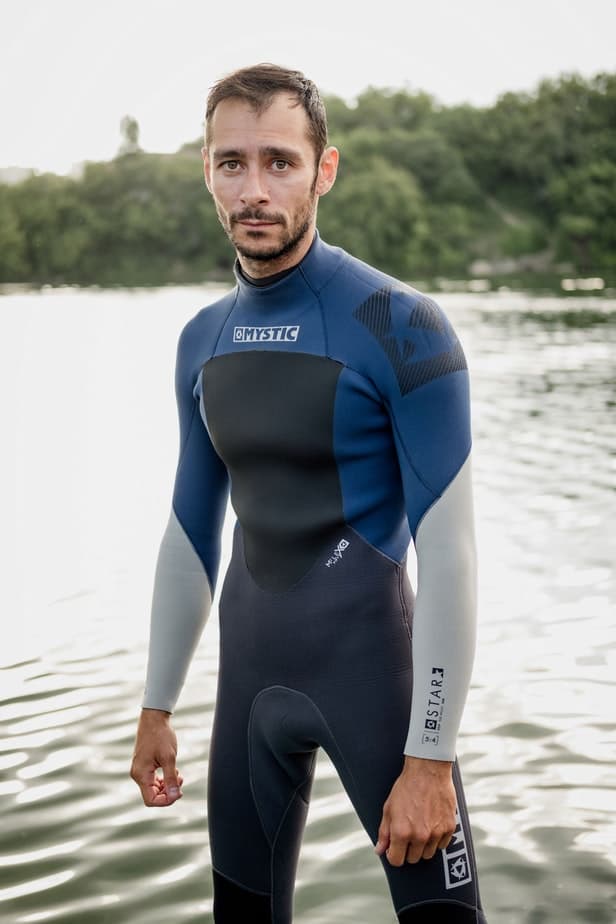If you’re an outdoorsy, water-loving kind of person then you’ve probably realized (or are starting to realize) that you basically need a wetsuit for any activities in the water.
You look up the cost of a high quality wetsuit and you can already feel your wallet getting lighter. Then you have an ingenious idea: why not just use the same wetsuit for all your various water sport activities?
Instead of buying separate kits for each sport, why not just use the same wetsuit across all activities if you can? This line of thinking is not uncommon for people who are scuba divers that also dabble in a bit of surfing and vice versa. However, you’ll quickly realize that this may not necessarily be a good idea.
Yes, you can wear a scuba diving wetsuit while surfing, but you need to realize that scuba diving wetsuits are not designed for surfing. Thus, there are some limitations to them that can make them very impractical and difficult to surf with.
Depending on where and when you’re surfing, you might not even need to wear a wetsuit in the first place. However, if you plan on surfing year round and want to experience those juicy winter swells, you’re going to have to get a wetsuit that can keep you warm without restricting your movement.
In this article, we’re going to go through the key differences between a surfing wetsuit and a scuba diving wetsuit so that you can understand why you should use a wetsuit for the sport it’s designed for.
Are all wetsuits the same?
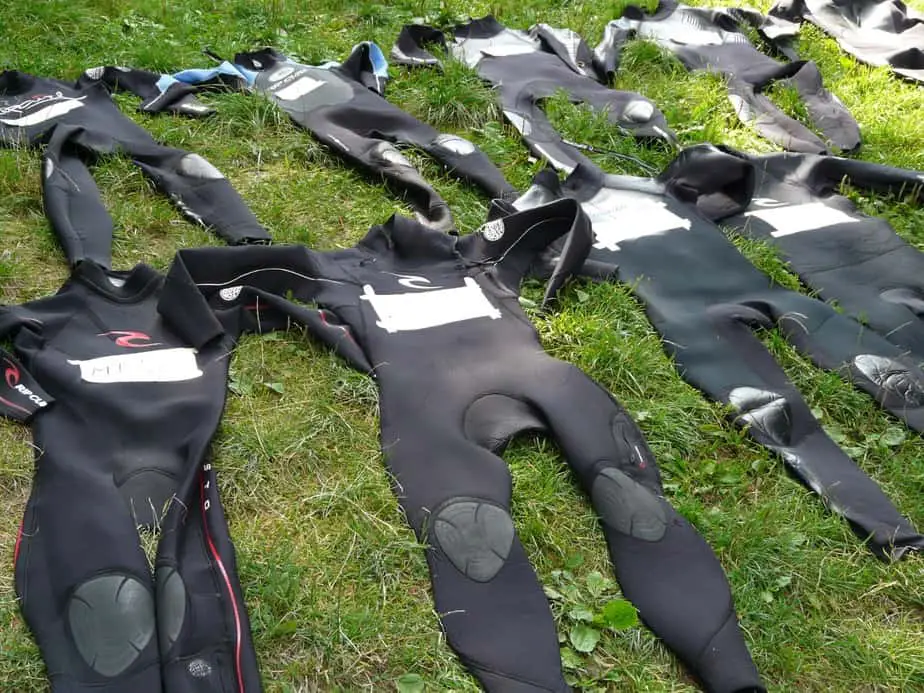
Other than the fact that the purpose of all wetsuits are to keep you warm and to offer UV protection, each wetsuit is tailored to a specific sport and there are many differences.
For instance, the type of neoprene used in a wetsuit’s construction will differ depending on if the wetsuit is intended to be used above or below water. We will be mainly focusing on scuba diving wetsuits and surfing wetsuits as a point of comparison.
Wetsuits have various levels of flexibility; enough so that you can do the required movements for the activity. For scuba diving, you do not need to have as much mobility, whereas for surfing, you need to be able to paddle and stand up on your surfboard – these all require great mobility.
Depending on the wetsuit, there will be different considerations made in regards to the specific wear and tear the wetsuit will be exposed to, how much comfort it will provide the wearer, and how much warmth it needs to provide.
There are even differences in zipper placement. Most surfing wetsuits will have the zippers on the back because they’d get in the way when you are paddling on the surfboard. Conversely, for scuba diving wetsuits, the zippers will be at the front because otherwise the scuba tank could press down on it uncomfortably.
We will go more in-depth into the specific features the respective wetsuits provide in the next section.
The differences between a diving wetsuit and surfing wetsuit
Material
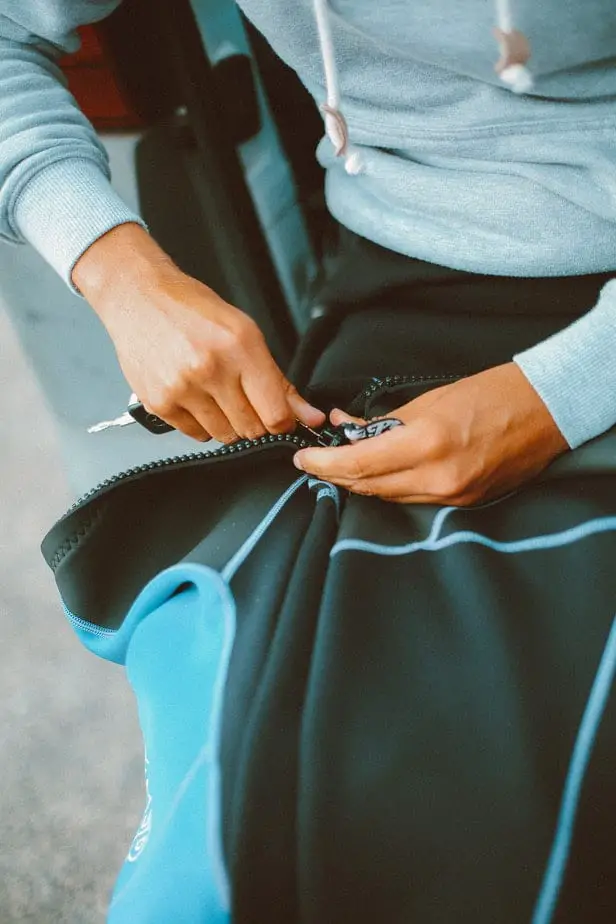
While both surfers and divers can be submerged underwater, scuba divers take it much farther and will go dozens if not hundreds of feet underwater for long periods of time.
The deeper you go underwater, the more pressure you (and your wetsuit) will be subjected to. At the surface, the pressure is 1 bar (1 atmosphere of pressure).
Every 10 meters deep, the pressure is increased by another atmosphere. This means that at a depth of 10 meters, the pressure is 2 ATA/bar. Then at a depth of 20 meters, it’s 3 ATA/bar. And so on.
Scuba diving wetsuits are designed to be compressed under pressure, meaning it’s sturdier, denser, and will retain its shape even after surfacing. To accomplish this, the neoprene necessarily has to be stiffer and thicker than a surfing wetsuit, which restricts movement.
Surfing wetsuits are worn mostly above the water, so it’s only subjected to regular amounts of pressure. Since surfers move their entire body to surf, surfing wetsuits must be lighter and more flexible to allow for that.
Thus, the neoprene found in surfing wetsuits will be stretchy and less durable than a diving wetsuit that will be subjected to immense pressure.
Thickness
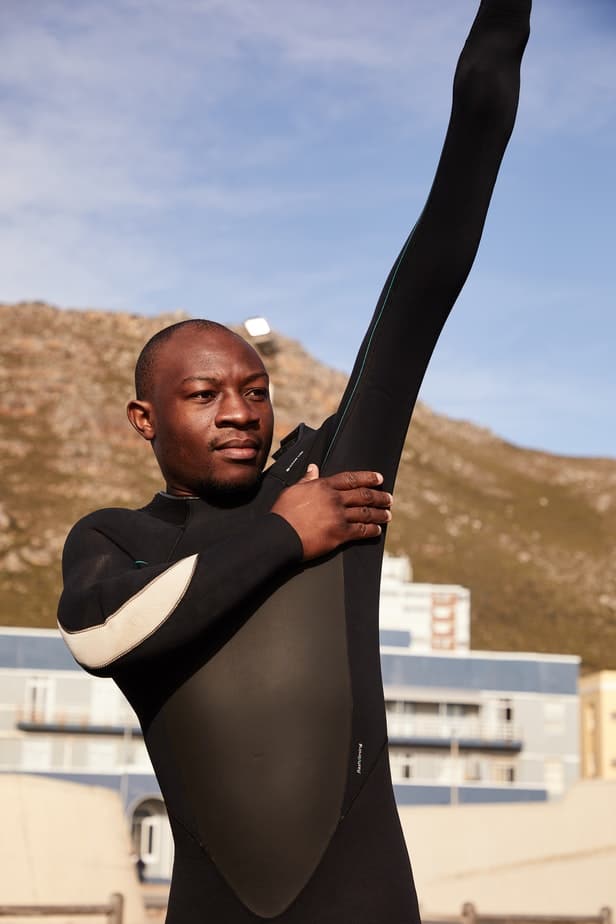
In addition to pressure, scuba divers will be subjected to colder temperatures. Water is extremely good at removing heat from your body, about 25 times faster compared to air, so diving wetsuits must be good at insulating the diver’s body heat.
On top of that, divers don’t need to make as many movements underwater. They want to keep their heart rate and energy expenditure low to minimize air consumption. Thus, a thicker wetsuit is acceptable for scuba diving because divers need to stay warm and don’t need to move very much.
Surfers, on the other hand, are highly active. Once they see a wave approaching, they’ll start paddling like crazy and then they’ll need to push themselves up and balance themselves on their surfboard.
This sudden burst of intensity will cause you to warm up and requires the wetsuit to be flexible. Thus, surfing wetsuits don’t need to be as good at keeping you warm since your body will naturally heat up during exercise, plus you need to actually be able to move around in them, so surfing wetsuits are thinner.
Wear and tear
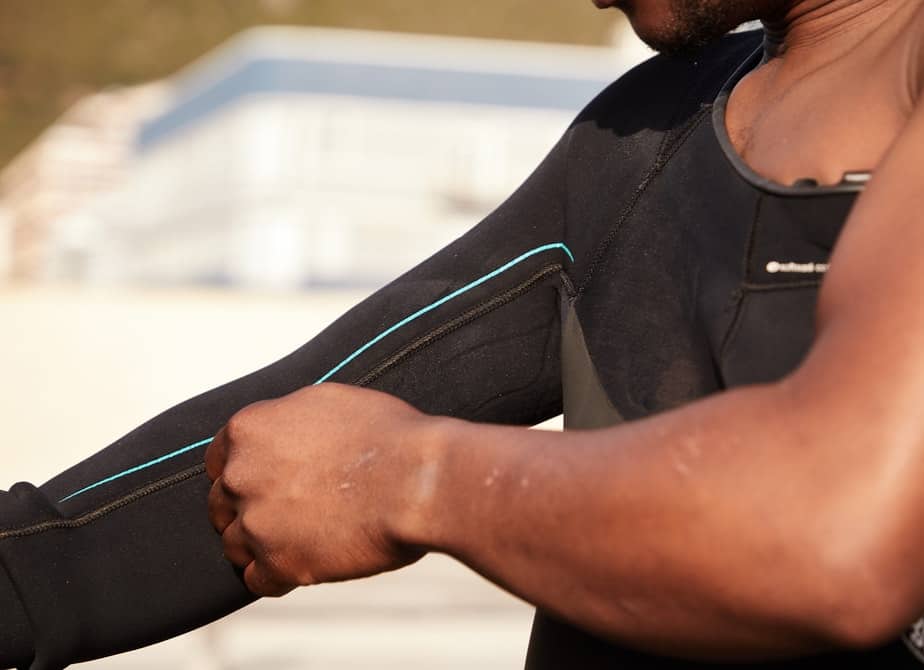
Diving wetsuits are constantly being worn down. In addition to the constant pressure, diving wetsuits will also be exposed to constant rubbing from the BCD straps, belts, backplate, buckles, and more. Thus, that is yet another reason to make diving wetsuits thicker to withstand the abuse it will endure.
Surfing wetsuits also get their fair share of wear and tear from the constant contact against the surfboard and surf wax. Thus, they are often reinforced around the elbow and knee pads. There are even surfing wetsuits with a reinforced rubber grip on the chest area.
By reinforcing only the areas that are most likely to be rubbed thin, the surfing wetsuit is able to remain thin and flexible in other areas.
Seals
The seals on the ankles, wrists, and neck are different as well.
For a diving wetsuit, water will enter and remain in the wetsuit because divers are literally submerged underwater. In fact, they don’t want to keep water out because the water will be warmed up by the body heat insulated inside, creating a warm layer of water around divers that helps keep them warm.
On the other hand, surfers spend the majority of their time above water. They will be battling rough surf and water will come at them at great speeds. They do not want to be waterlogged because it restricts their movement and can throw off their balance. Thus, surfing wetsuits have tighter seals that are made out of rubber which restricts the amount of water that flows through the wetsuit.
Zipper placement
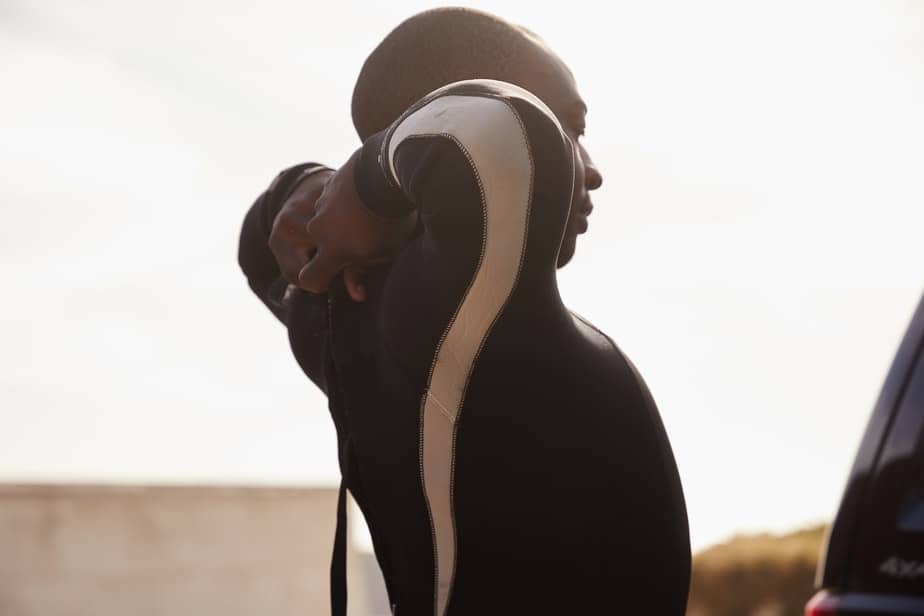
Both diving and surfing wetsuits have the option of wetsuits with zippers in the front or in the back, called front zip and back zip respectively. There are pros and cons to each.
The vast majority of wetsuits are back zip and this is arguably better for surfers. Since you will be laying on your front as you paddle towards a wave, having a front zipper can be uncomfortable as this can press against your chest and your surfboard unlike the back zip style.
Conversely, diving wetsuits may prefer front zip wetsuits because back zippers can be pressed against your back uncomfortably by the scuba tank and BCD.
With that said, you can use whichever one feels most comfortable to you. There is no rule that surfers should only use back zip and scuba divers should only wear front zip wetsuits.
In general, the advantage of back zip wetsuits is that they are much easier to put on and take off. They have a much larger opening that allows people to slip in and fasten up.
That said, the downside of a back zip style wetsuit is that large amounts of water can penetrate through the looser neck collar. This means your wetsuit will be waterlogged more easily, and it is especially undesirable in colder water.
Front zip wetstyles are typically more tight-fitting, meaning putting it on is more difficult. However, the advantage is that less water will enter it, making it optimal for colder water compared to back zip wetsuits.
Color

Most wetsuits are black, but why settle for a boring ol’ black wetsuit when you can show off your fashion sense and personality by wearing a brightly colored one while surfing?
When surfers shop for a wetsuit that has a color and design that they like, they typically do not consider how it will look underwater. Surfer is mostly done above the water after all, right?
However if you plan on diving underwater with it, suddenly color matters when it comes to visibility. This is because the deeper you dive, the more the colors get lost from the color spectrum. The color red will fall victim first, even in shallow depths, so you definitely don’t want a red wetsuit if you still want your personality to shine (and your visibility to remain high).
There is also the matter of patterned designs on wetsuits. There is an ongoing debate on whether colors will make you more attractive to sharks, and whether sharks avoid certain patterns or are attracted to them.
The consensus seems to be that sharks are color blind, so colors don’t matter so much, but rather patterns do. If your wetsuit has the patterns of a poisonous fish, then that may deter sharks from chomping on you. There’s also an argument that none of this matters, because sharks may be attracted to the splashing that surfers cause with no regard to what they are wearing.
It’s something to look into if sharks terrify you, or you can just wear whatever you want if you think none of this matters.
Can I use one wetsuit for both surfing and diving?
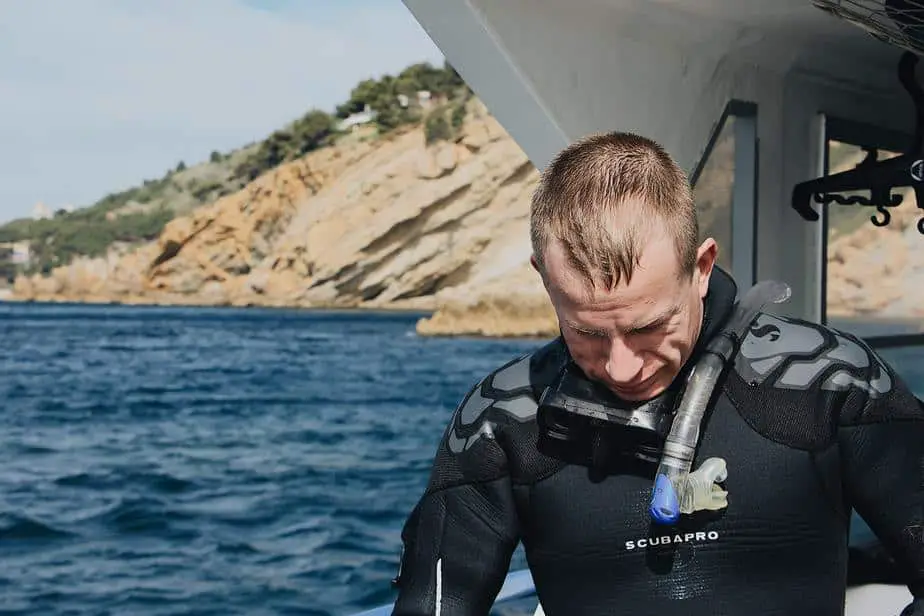
Now that you know the general differences between surfing wetsuits and diving wetsuits, it shouldn’t be a surprise that our conclusion is that you should get a different wetsuit for each sport.
However, that conclusion does not help you if you don’t have the budget for multiple wetsuits. If you only have the option of getting one, which wetsuit can be used across both sports? It’s not optimal, but in that case we would have to say a diving wetsuit can also be used for surfing, but not vice versa.
As mentioned, the biggest downside of a diving wetsuit is how thick it is and how much it restricts your mobility. Zipper placement might also be an issue if you have a front zip wetsuit that gets in the way when paddling.
However, a diving wetsuit will keep you warm whether you’re diving or surfing. It will also retain its shape under several atmospheres of pressure.
The same cannot be said for surfing wetsuits used for diving. You will feel a lack of insulation if you try diving with a surfing wetsuit. Furthermore, the surfing wetsuit is not designed to withstand the water pressure at depth, so it will be compressed heavily and unlikely to retain its shape once you surface.
At the end of the day, all wetsuits provide protection against marine life, scrapes, cuts, and harmful UV rays, as well as keep you warm. However, they are designed for different uses, and it’s not a good idea to use one for both activities.
Parting words
A high-quality wetsuit is not a cheap investment, and if you happen to both scuba diver and surf, you will be tempted to just use one wetsuit to save several hundreds of dollars. However, for the best possible performance, you really should get a wetsuit for each activity.
If you decide to use only one wetsuit, then it’s better to use a scuba diving wetsuit. A surfing wetsuit can be a safety hazard when diving because it will not keep you as warm, increasing the risk of hypothermia or at least ending your dive prematurely.
Furthermore, when you wear the wrong wetsuit for the activity, you are subjecting it to wear and tear that it’s not designed to endure. You are shortening its lifespan which means that you will have to spend money to replace it a lot sooner than expected, defeating the purpose.
Get the right wetsuit for the job. If you cannot afford to buy your own wetsuit, then at least consider renting the appropriate gear in the meantime so that you do not compromise on your safety.
You might also be interested in these related articles:

